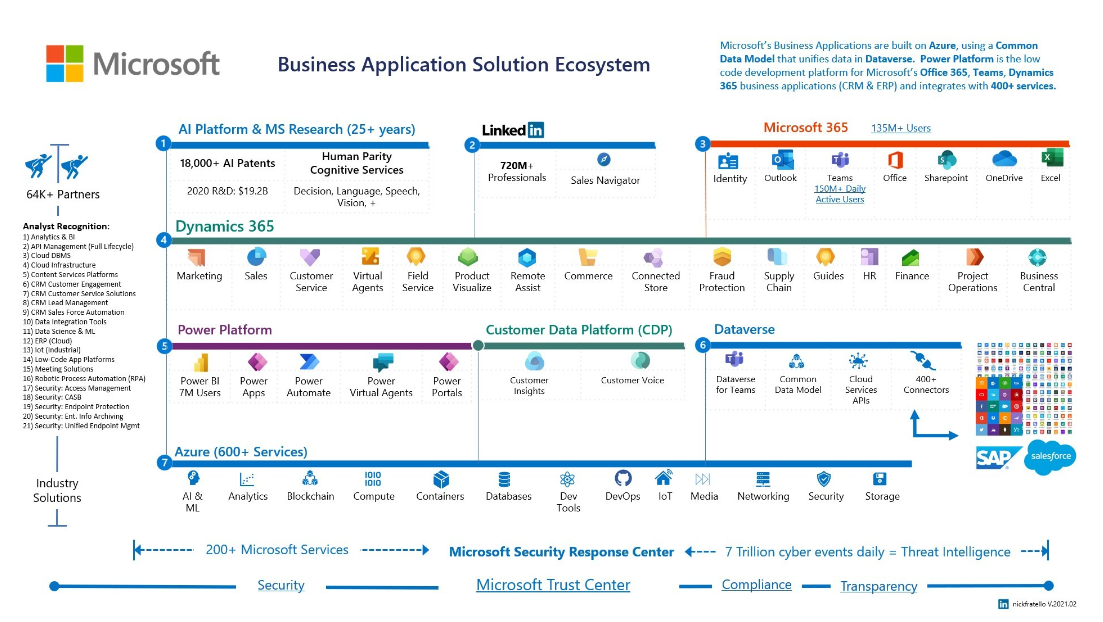Many organizations find their Power Platform investments falling short of expectations, and the root cause is surprisingly straightforward: they attempt to tackle every business challenge with a limited range of platform capabilities. This is particularly evident in organizations that remain stuck in the early stages of Low Code Adoption.
This article is not aimed at newcomers to the Power Platform, who understandably grapple with its intricacies. Instead, it’s directed toward organizations that have spent years striving for higher levels of maturity without significant success.
These organizations often view every business challenge as a nail, and their preferred hammer is Power Apps, particularly Canvas Apps. However, this one-size-fits-all approach neglects a critical reality: technology alone cannot solve complex business problems, a lesson that becomes painfully apparent for organizations trapped in this mindset.
Regrettably, most organizations encounter this scenario repeatedly, and it typically unfolds as follows:
- Someone in an internal Department stumbles upon the Power Platform, often through sales or marketing presentations or their exploration, with a heavy emphasis on Power Apps Canvas Apps. Their excitement is contagious and they eagerly share their discovery with management.
- With management’s blessing, A and B from the internal Department embark on a journey to develop a slew of applications intended for enterprise use. However, as time goes on, users of these solutions begin to notice performance issues, incomplete features, scalability problems, and more.
- At this point, the traditional IT department, still clinging to a developer-centric mindset, swoops in to rescue the day. Unfortunately, due to their resistance to the concept of Low Code No Code (LCNC) and a lack of information, they often exacerbate the problem rather than solve it.
- Predictably, this adventure ends with management concluding that the Power Platform isn’t suitable for enterprise scenarios and can’t deliver meaningful solutions that meet business expectations.
Does this scenario sound familiar? What went wrong? Several missteps occurred, and I’ll outline them below.
Lack of Understanding of the Platform by Management
Management should not greenlight the development of enterprise-scale solutions without first gaining a comprehensive understanding of the platform’s capabilities. Making uninformed decisions can have dire consequences, including significant financial losses and damage to an organization’s reputation. Such decisions also hinder organizational innovation, wasting both time and money.
Furthermore, if your organization has a conservative IT department, introducing LCNC platforms may face resistance. These departments often perceive LCNC platforms as a threat to their domain because they enable non-IT personnel to create impactful solutions. It’s akin to someone taking their throne on the IT hill.
In this situation, well-informed management becomes crucial, as they need to convince their IT department that this change presents new opportunities. It allows IT to focus on critical business challenges while delegating less critical ones to business users. Jack and Jane should be seen as citizen developers using citizen-driven development techniques to enhance their personal and team productivity. Critical enterprise solutions should not rely on tools like SharePoint Lists and Canvas Apps alone.
In summary, a better understanding of the Power Platform's capabilities at all levels of the organization, along with effective communication, can pave the way for successful implementation and the realization of its true potential.
However, the Microsoft Power platform is not just an LCNC platform where only business users can create simple applications. When it comes to IT-driven development Microsoft provides a tool kit full of alternatives as well. It is the responsibility of internal IT together with management to pick the correct development path that suits the requirement.

Lack of Understanding of the LCNC Operating Environment
Management must refrain from diving headfirst into solutions without a clear understanding of how these solutions contribute to the business. Establishing a robust product vision and aligning it with the overarching business strategy, goals, and objectives is an exercise that should never be underestimated. All too often, I’ve encountered situations where considerable time and effort were invested in creating enterprise solutions, only to discover that a significant portion of the features went unused or, in some cases, the solutions were entirely abandoned.
However, having a product vision is just the beginning. It’s equally important to create the necessary conditions to transform that vision into a tangible product or service. Sometimes, a product vision remains unrealized due to the absence of a solid foundation, which I will delve into shortly.
Fortunately, my involvement in projects of varying sizes and complexities has provided me with valuable insights. While each project presented unique challenges, they shared a common thread: the absence of a low-code strategy. Crafting a low-code strategy involves addressing three fundamental questions:
- Why Low Code in your organization?Consider objectives like cost reduction, innovation, business process optimization, and self-service, among others.
- Who is your target audience?Determine whether your focus is internal or external, enterprise-wide or limited to specific departments or teams.
- How will you support your audience?Define whether your approach will be formal or informal, involving a center of excellence or center of enablement, and so on.
By answering these questions, you lay the foundation for defining the vision and mission of low code within your organization. This encompasses aspects such as management and governance structure, change management approaches, support models, and alignment with business strategy, objectives, and goals. While I won’t cover all the details here, these considerations provide a starting point.
With your low-code strategy in place, the second focus should be gaining control over your platform. Attempting to build enterprise solutions on a chaotic platform is a recipe for disaster. Without proper governance, you risk issues like database capacity depletion, workspace confusion, security and integration problems, and the proliferation of overlapping solutions. Your low-code strategy should dictate how platform governance, often referred to as technical management, will be structured. This includes decisions on which features to enable or disable, the utilization of security groups, the application of policies, adherence to naming conventions, and more.
Once platform governance is streamlined, attention turns to the third focal point: enabling the type of development that suits your organization. This is what I term “low-code governance.” Low-code governance empowers all developers, whether citizen developers or IT professionals, to create solutions in line with best practices and organizational guidelines. It ensures developers are adequately trained, educated, supported, and equipped with the necessary tools to comply with development standards. Additionally, low-code governance determines the most suitable development approach to address specific business challenges.
Lastly, we come to the development phase itself, which encompasses citizen-driven development, IT-driven development, and fusion development. Each of these approaches has unique characteristics and requires a distinct methodology. When you reach this stage, you’ll have established a solid foundation to facilitate the successful development of solutions, particularly for enterprise solutions. This entails addressing typical solution architecture aspects like requirements analysis, data and reporting strategy, UI/UX design, logic, and integration strategy, security measures, and more.
Conclusion
The Power Platform is a powerful tool, but like any tool, its effectiveness depends on how it’s used. Organizations that approach Power Platform adoption without a clear strategy, platform governance, and an understanding of its capabilities risk disillusionment and missed opportunities.
At Meridian Creative Solutions, we understand the complexities of low-code/no-code development and can help you navigate this landscape. Our Enterprise Solutions team has the expertise to guide you through strategy, platform management, and solution development, ensuring your Power Platform investment delivers the results you expect. Visit our Enterprise Solutions page to learn how we can help you harness the full potential of low-code.



